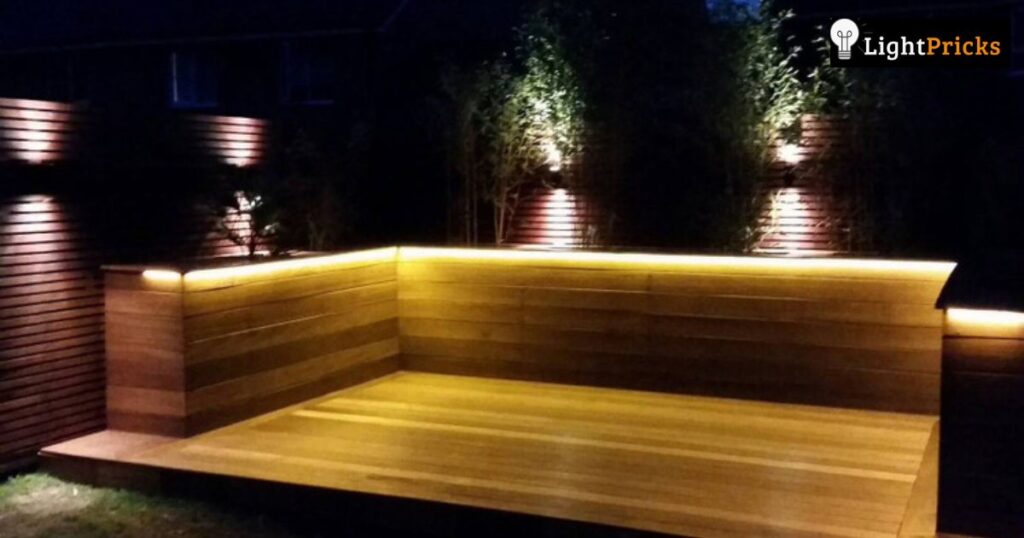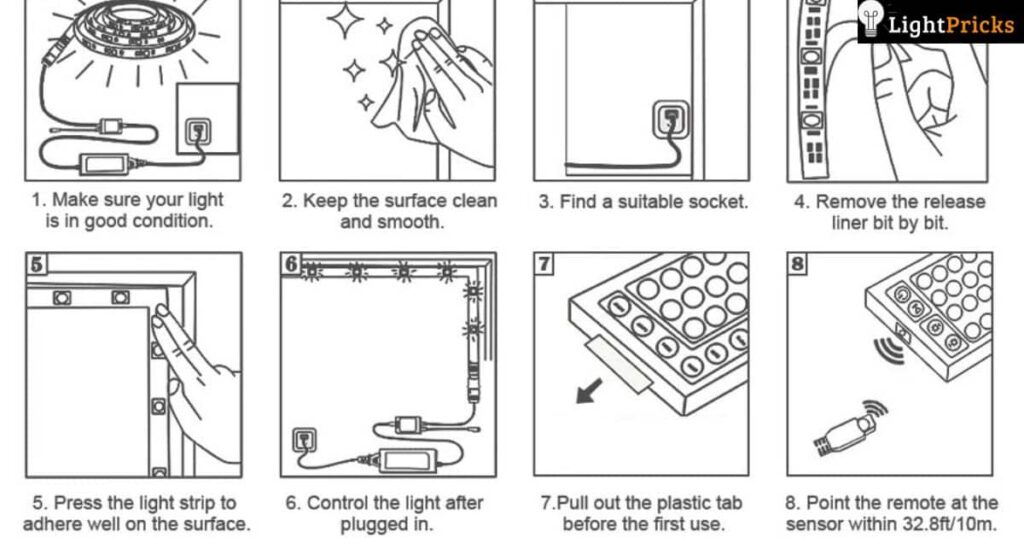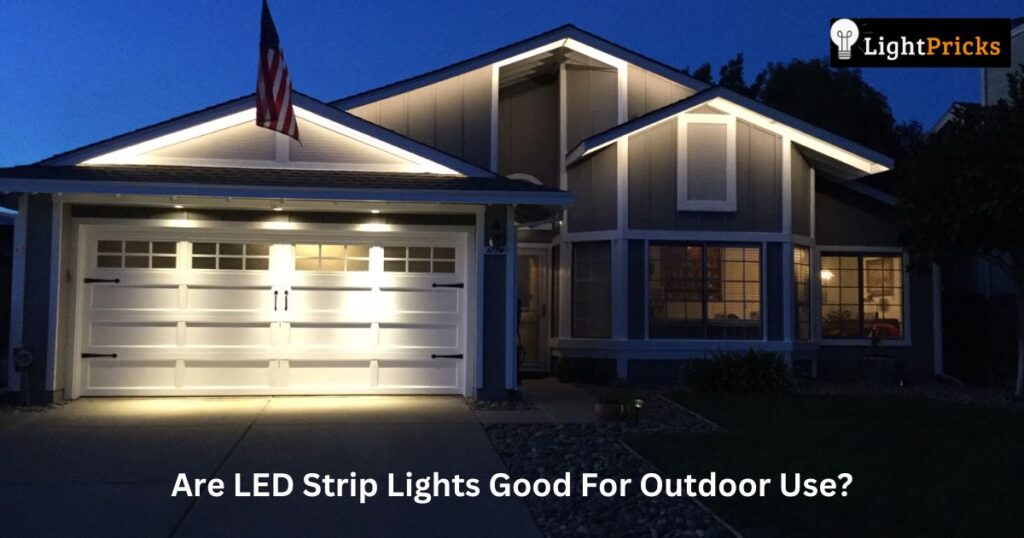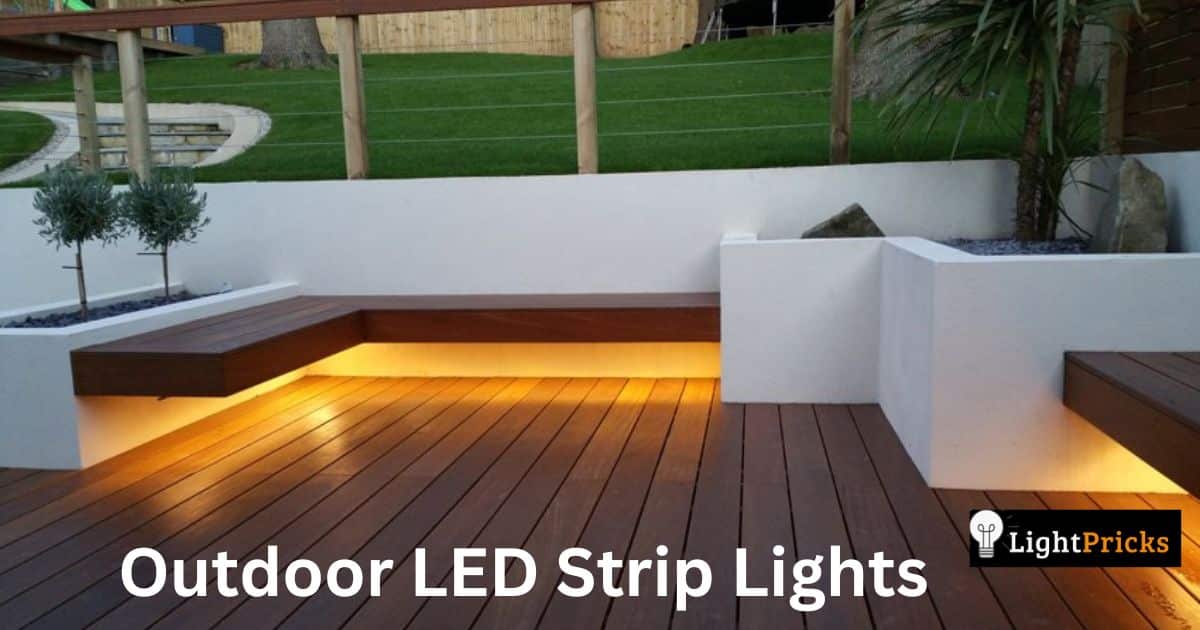Outdoor LED strip lights are exciting lights that allow homeowners to decorate their outdoor spaces after dark. These colorful and energy efficient strips contain many tiny LED bulbs placed close together. When installed along landscaping, pathways, decks and other areas, they provide lovely lighting without using much electricity.
In this article, we will learn about the different types of outdoor LED strip lights and how to properly plan and set them up. We will explore creative project ideas as well as the basics of installation. By the end, you may be interested in adding these affordable accent lights to enhance the surroundings outside your home.
What Are Outdoor LED Strip Lights?

Outdoor LED strip lights are thin, flexible plastic strips that contain densely packed strings of bright LED bulbs spaced just centimeters apart. LEDs, or light emitting diodes, are energy-efficient semiconductor lights that remain cool to the touch even when illuminated. Unlike traditional incandescent bulbs, LEDs have a very long lifespan measured in decades rather than years.
Outdoor strips are made of durable, weather-resistant materials enabling them to withstand rain, snow, heat and cold. Their low voltage power needs make them a safe choice for outdoor use. The lights can be customized with colors, brightness levels and even programmed to change patterns automatically utilizing included controllers.
Types Of Outdoor LED Strip Lights
When choosing LED strips, consider your project needs and budget. Here are some common outdoor LED strip light options:
- Single-Color Strips: Provide a solid-colored glow in hues like blue, white or green. Affordable basic option.
- Multicolor Strips: Contain RGB LEDs to display millions of colors and seamlessly shift between hues using a remote control.
- White Light Strips: Ideal for pathways, decks and general lighting, some feature dimming.
- Accent Lighting Ribbons: Thinner profile nicely outlines curved surfaces.
- Solar Powered Strips: Rechargeable batteries run the lights without wiring, practical for installing anywhere.
- Waterproof Strips: Rated for submersion, enabling creative underwater lighting applications.
Quality brands to consider include Lights.com, Sunnest and Twinkly. Their durable, bright strips ensure long-lasting outdoor installations.
Can You Use LED Lights For Outside?
LED lights are a great option for outdoor use. They are made to withstand all weather conditions like rain, snow, heat and sunlight. Unlike regular indoor lights, outdoor LED lights are water resistant and durable.
As long as you install them correctly using tape or fixtures meant for outside, the LED bulbs and strips will not get damaged from things like moisture or cold temperatures. They provide bright and colorful lighting but stay cool, so there is no risk of heat damage either. LED lights are energy efficient and long lasting, making them a good choice to enhance landscapes, yards and patios after dark with their lighting.
Planning Your Outdoor LED Lighting Project
Before putting up any outdoor lights, plan where they will go. Draw your yard and mark existing structures. Note areas like gardens, steps or patios that could look good lit up. Measure these spaces so you buy the right amount of lights. Think about how the new lights will match your home and landscaping in the dark.
Consider timers, motions sensors or other options needed. Seeing lighting at other homes at night can provide ideas. With a clear vision on paper, the installation process goes smoother knowing lights are thoughtfully placed instead of randomly scattered. Proper planning saves money and helps make your lighting vision a reality.
Steps To Install Outdoor LED Strip Lights

Following a few basic steps ensures safe and long-lasting LED strip installations:
- Purchase the length of strip lighting needed plus any additional parts like a power adapter or controller unit.
- Test that all lights are functioning before installing. Check for breaks or burnt out bulbs indoors first.
- Mounting methods include adhesive tape, plastic stakes, cable ties or track channels dependent on the surface.
- Starting at an inconspicuous corner or outlet, run the plastic strip along its intended path as marked, cutting as needed with snips.
- Securely connect sections using 3M tape splices or plastic joiners, keeping connections clean and taped well.
- Plug the strip into its power source like an adapter plugged into a GFCI outlet, concealing all cords.
- Program wireless controllers or install additional accessories like motion sensors.
- Test and admire – your lighting project is complete! Periodically inspect connections.
With care, LED strips can reliably illuminate gardens for 10+ years, providing a very low-cost lighting solution over time versus alternatives. Contact me if you need any installation tips or advice.
Creative Outdoor Lighting Projects
Here are some inspiring project ideas to get you lighting up your yard:
- Uplighting Landscaping: Accentuate trees, bushes and flower beds by running solar-powered strips up trunks and along garden edges. Soft colored illumination transforms plantings into focal points.
- Decorative Fence Lighting: Use adhesive ribbon strips or stakes to trace fence boards with a gently glowing row of white LEDs for safety and curb appeal at night.
- Pathway Lighting: Line a winding stepping stone path from the front door to a backyard sitting area with color-changing multicolor strips for a magical walkway.
- Patio Perimeter Lighting: Run waterproof RGB strips under the roofline or benches of a covered patio or deck for an integrated lighting solution.
- Backyard Feature Lighting: Attach IP65-rated strips safely under water features like fountains or ponds to reflect off the water’s surface after dark.
- Solar Accent Lanterns: DIY attractive landscape lighting by attaching battery-powered solar accent lighting kits to tree stumps or moss-covered pillars.
LED strips brilliantly accentuate gardens, pathways, structures and landscaping with their flexible lighting design options. Consider following design principles and properly installing strips for reliably safe illumination night after night. Reach out if any project captures your interest for more specifics.
Maintenance And Troubleshooting Tips
Periodically inspect outdoor LED strip light connections, mounts and power sources to catch any potential issues before they cause outages:
- Check tape-mounted sections regularly remain securely connected. re-apply tape if edges peel up over time in extreme weather.
- Gently clean any built-up grime, leaves or debris from strips which could cause short-circuits if not rinsed.
- Trim back plant growth that may be touching strips, keeping distance between foliage and lighting.
- Ensure cord and controller access points remain dry-sealed against water damage.
- Test battery-powered solar strips still charge and hold lumens adequately.
- Surge protectors or UPS backup helps safeguard sensitive controllers during storms.
With minimal upkeep over years, LED strip lights continue beautifully illuminating landscapes long-term for extremely low energy costs compared to traditional options. Contact me if troubleshooting advice would help enhance your lighting display.
Which LED Is Best For Outdoor?
When choosing LED lights for outside, it’s best to pick ones that are meant specifically for use in outdoor spaces. LED strip lights labeled as “water resistant” or “weatherproof” usually work well since they have tough casings to protect against rain and sun. Even color changing strips can stay lit if they say “rated for wet areas.”
A warm white light around 2700-3000 Kelvin (K) provides a cozy feel for evenings, while a brighter white at 5000-6000K lets you see better if you need security lighting or to light up a large yard. No matter what style you pick, focusing on lights designed for outdoors means they’ll keep glowing beautifully through different weather instead of stopping fast like basic indoor LEDs might.
Are LED Strip Lights Good For Outdoor Use?

Many people wonder if LED strip lights can be used outside since we are so used to seeing holiday and decorative lights inside our homes. LED strip lights are actually a great option for outdoor lighting because they are very durable and weather resistant. The thin, flexible strips are made to withstand rain, snow, heat and cold. Since LED bulbs stay cool even when lit, there is no risk of heat damage from outdoor conditions.
As long as the strips are installed properly using outdoor-rated adhesives and fixings, they will provide lovely, energy-efficient lighting that can enhance gardens, patios and other outdoor areas for many years.
FAQ’s
Do outdoor LED lights use a lot of electricity?
Outdoor LED lights are very power efficient. They use much less electricity than other types of outdoor lights like incandescent bulbs. LEDs stay lit for hours with only a small amount of daily power usage. This makes them a low-cost option for lighting up areas outside over the long run.
Why do outdoor LED lights fail?
Outdoor LED lights can stop working over time for a few main reasons. Water can get inside if not sealed properly during installation. Harsh weather like storms may slowly wear down seals holding out moisture. Sometimes low quality LEDs don’t hold up well against heat, cold and sun exposure outside long term.
Do LED lights get hot?
All lights make some heat as energy is used. LED lights get warmer as they shine, but not as hot as other bulbs. LED temperature rises less compared to incandescent or CFL bulbs. This means LED lighting stays cooler even when lit for a long time.
Final Thoughts
Outdoor LED strip lights are a fantastic way to add beautiful lighting to your yard, garden, patio or other outdoor areas. They provide bright, colorful lighting while using very little electricity. As long as you choose strips that are meant for outdoor use and install them correctly, they will last for many years of beautiful illumination through all types of weather.
LED strip lights open up many creative lighting project possibilities and affordably transform outdoor spaces after dark. I hope this information helps you decide if adding decorative strip lighting is right for your home landscape. Let me know if you have any other questions!













